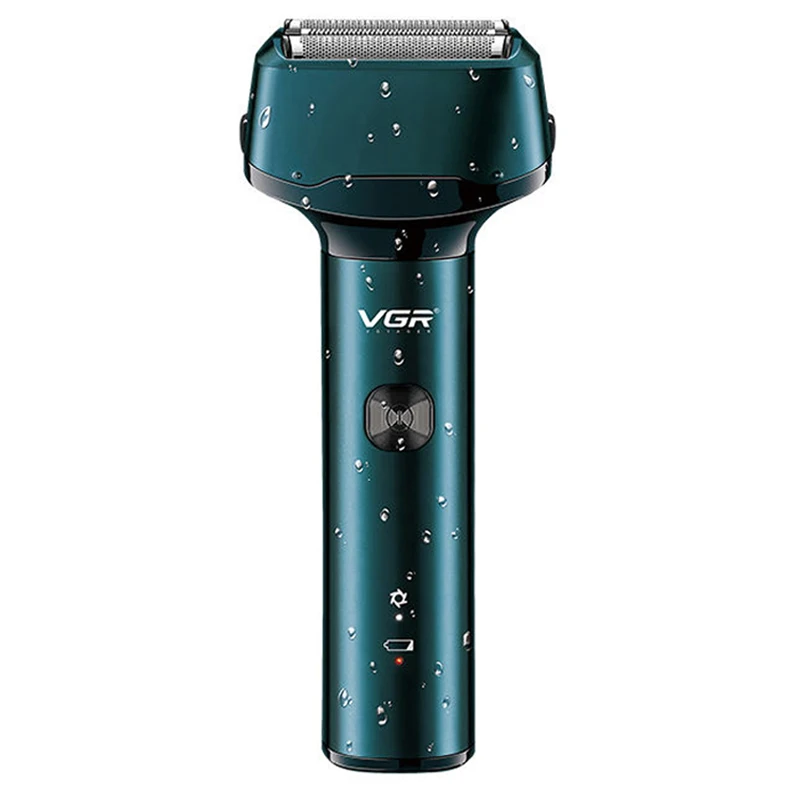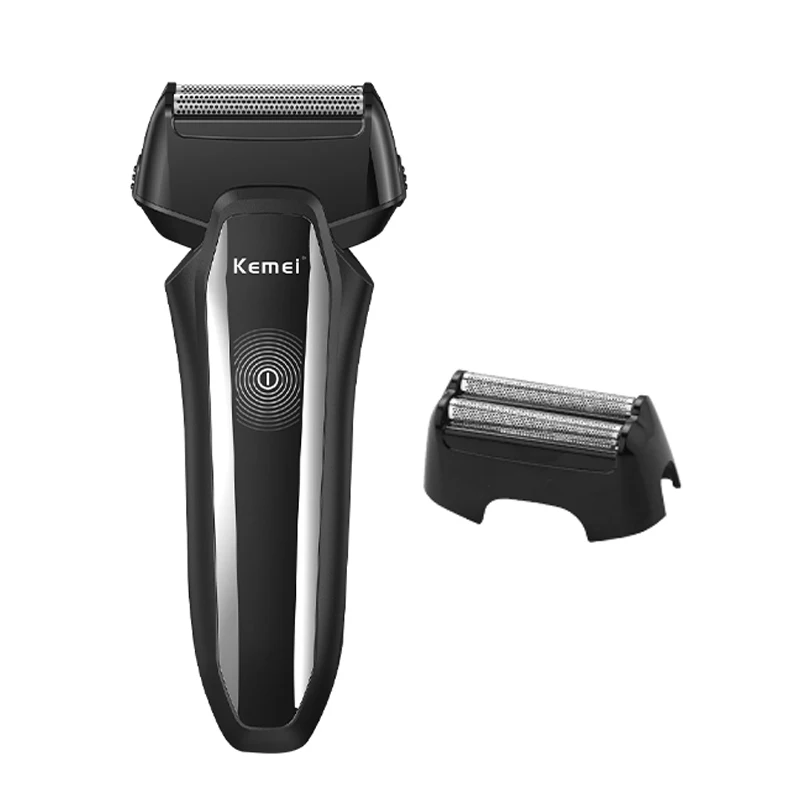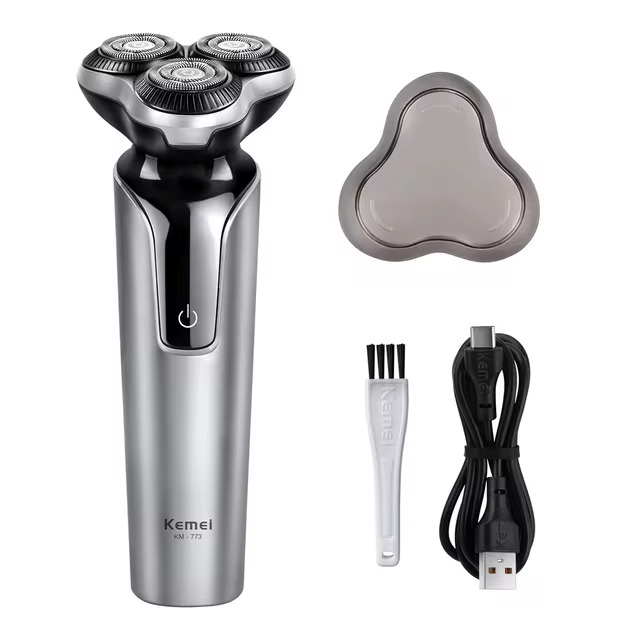In the realm of personal grooming, the debate between razor vs electric shaver has been ongoing for decades. Each option offers its own set of advantages and disadvantages, making the choice largely dependent on individual preferences, skin type, and lifestyle. This comprehensive guide delves into the intricacies of both razors and electric shavers, helping you make an informed decision that aligns with your grooming needs and habits.
Shaving Experience
Closeness of Shave
One of the primary considerations when choosing between razor vs electric shaver is the closeness of the shave. Razors are renowned for providing a very close shave, often down to the skin. This is because the blades cut the hair below the skin’s surface, resulting in a smooth finish. For individuals seeking the closest possible shave, especially for styles that require precision, razors are generally the preferred choice.
Electric shavers, while not typically as close as razors, offer a satisfactory shave that is sufficient for most grooming needs. The blades in electric shavers do not cut as close to the skin, which can be advantageous for those with sensitive skin, as it reduces the likelihood of irritation. Additionally, electric shavers are capable of trimming and managing longer hair, providing versatility in styling options.
Skin Sensitivity and Irritation
Skin sensitivity is a crucial factor in the razor vs electric shaver debate. Razors can sometimes cause irritation, razor burn, or ingrown hairs, especially if not used correctly. The direct contact of blades with the skin can lead to micro-cuts and inflammation, particularly for those with sensitive skin or coarse hair. To mitigate these issues, it is essential to use proper shaving techniques, high-quality razors, and adequate lubrication through shaving creams or gels.
Electric shavers are often lauded for being gentler on the skin. Since they do not slice hair as closely as razors, there is less risk of skin irritation and other related issues. Many electric shavers come with adjustable settings and specialized blades designed to minimize friction and adapt to different skin types. This makes them a suitable option for individuals prone to shaving-related skin problems.
Convenience and Time
Speed of Shaving
When it comes to shaving efficiency, electric shavers generally hold an advantage over razors. They are designed for quick single-pass use, allowing users to achieve a shave in a matter of minutes without the need for multiple strokes. This can be particularly beneficial for those with busy schedules or who shave frequently, such as men who require a clean shave for work every day.
Razors, while capable of providing a very close shave, often require more time and effort. Multiple passes may be necessary to achieve the desired smoothness, and the process usually involves additional steps like applying shaving cream and cleaning the blades after use. This extended routine can be time-consuming, especially for individuals seeking a fast and hassle-free grooming solution.
Portability and Ease of Use
Electric shavers offer significant convenience in terms of portability and ease of use. Many models are cordless, compact, and battery-operated, making them ideal for travel and on-the-go use. They can be used in various settings, including dry or wet environments, depending on the model, which adds to their versatility.
Razors, while simple and easy to carry, require access to shaving supplies such as shaving cream, water, and a clean surface for use. Disposable razors are convenient for travel, but higher-quality shaving systems with multiple blades and safety features can be bulkier and less practical to transport. Additionally, maintaining razor hygiene requires careful handling and storage to prevent infections and prolong blade life.
Cost Considerations
Initial Investment
The initial cost of purchasing a razor vs electric shaver can vary significantly. Razors, especially disposable and cartridge types, are generally more affordable upfront. A basic razor can be purchased for a few dollars, making it accessible for most budgets. Electric shavers, however, require a higher initial investment, with prices ranging from modest to quite expensive depending on the features and brand. High-quality electric shavers can cost several hundred dollars, which might be a barrier for some consumers.
Long-term Costs
While razors are cheaper initially, the long-term costs can add up due to the need for regular replacement of blades and cartridges. These recurring expenses can become substantial over time, especially for those who shave frequently. Additionally, the recurring cost of shaving creams, gels, and aftershaves should be considered when evaluating the overall expense of using razors.
Electric shavers, despite the higher upfront cost, often prove to be more economical in the long run. The blades and foils in electric shavers typically last for months or even years before needing replacement, reducing the frequency of purchases. Some models offer washable or self-cleaning features, further minimizing maintenance expenses. Over time, the cumulative cost of using an electric shaver can be lower compared to the continual purchase of razor blades and accessories.
Maintenance and Longevity
Cleaning and Care
Maintaining a razor requires regular cleaning to prevent rusting and ensure optimal performance. After each use, blades should be rinsed and dried thoroughly to prevent corrosion and bacterial growth. For cartridge razors, replacing blades regularly is essential to maintain a smooth shave and prevent skin irritation.
Electric shavers also require maintenance, but the process differs significantly. Many electric shavers come with cleaning stations or self-cleaning mechanisms that simplify the maintenance process. Regular cleaning of the shaver heads, either manually or through automated systems, ensures longevity and consistent performance. Additionally, some electric shavers require occasional lubrication of the blades to keep them functioning smoothly.
Replacement Parts
Both razors and electric shavers require replacement parts, though the nature and frequency differ. Razors primarily require blade replacements, which are easy to find and replace. Electric shavers may need to replace not only blades but also foils, batteries, and other components over time. The cost and availability of these parts can affect the overall usability and longevity of the shaver.
Electric shavers from reputable brands often have easily accessible replacement parts and repair services, which can extend the lifespan of the device. In contrast, disposable razors typically have a finite lifespan, after which the entire unit must be discarded and replaced, contributing to ongoing costs and environmental waste.
Versatility and Features
Additional Features of Electric Shavers
Electric shavers often come equipped with a variety of features that enhance their functionality and user experience. These can include adjustable speed settings, multiple shaving modes (such as wet and dry), built-in trimmers for facial hair, and LED displays indicating battery life or maintenance needs. Some high-end models offer smart technology integration, allowing users to customize their shaving experience through mobile apps.
Furthermore, many electric shavers are designed to be used in both wet and dry conditions, providing flexibility for users who prefer to shave with shaving cream or in the shower. The inclusion of ergonomic designs and comfortable grips also contributes to a more enjoyable and efficient shaving process.
Traditional Uses of Razors
Razors, particularly manual ones, offer a level of precision and control that is unmatched by electric shavers. This makes them ideal for detailed grooming tasks, such as shaping sideburns, beards, and mustaches. Electric shavers, while versatile, may not provide the same level of fine control needed for intricate styling.
Moreover, razors allow for different shaving techniques and levels of pressure, enabling users to customize their shave based on personal preference and hair type. This adaptability can lead to a more personalized grooming experience, catering to individual needs and styles.
User Preferences and Lifestyle
Personal Grooming Habits
Individual grooming habits play a significant role in determining whether a razor or electric shaver is the better option. Those who prefer a morning routine that is quick and efficient may lean towards electric shavers for their speed and convenience. Conversely, individuals who enjoy the ritual of shaving and appreciate the precision that razors offer might find manual razors more satisfying.
Travel and Portability
For frequent travelers, the portability and ease of use of electric shavers can be a major advantage. Cordless electric shavers with long battery life and lightweight designs are ideal for on-the-go grooming. However, travelers who prioritize minimal packing might still prefer disposable razors due to their compact size and lack of need for additional shaving products.
Professional Requirements
In professional settings where a clean and precise appearance is necessary, the choice between razor vs electric shaver can impact one’s grooming standards. Some professions may prefer the ultra-smooth finish provided by razors, especially in industries where personal presentation is critical. Others might prioritize the efficiency and practicality of electric shavers, which allow for a clean shave without the risk of nicks and cuts that can occur with manual razors.
Technological Advancements
Innovations in Razor Technology
Razor technology has seen significant advancements aimed at enhancing the shaving experience. Multi-blade systems, pivoting heads, and lubrication strips are examples of innovations that have improved the efficiency and comfort of razors. Additionally, researchers and manufacturers continue to develop blades made from better materials that stay sharper longer and cause less irritation.
Progress in Electric Shaver Design
Electric shavers have also benefited from continuous technological progress. Modern electric shavers feature improved battery life, quieter motors, and more effective blade systems. Innovations such as flexible heads that adapt to facial contours, advanced motor technologies for faster and smoother shaves, and smart features that alert users when maintenance is needed have all contributed to making electric shavers more user-friendly and effective.
Moreover, the integration of waterproof designs and compatibility with shaving gels and foams has expanded the versatility of electric shavers, allowing them to cater to a wider range of user preferences and grooming styles.
 Conclusion
Conclusion
In the ongoing razor vs electric shaver debate, there is no one-size-fits-all answer. Both options offer unique benefits and drawbacks that cater to different preferences and requirements. Razors provide an exceptionally close shave and precise control, making them ideal for those who prioritize smoothness and detail in their grooming routine. On the other hand, electric shavers offer unparalleled convenience, speed, and reduced skin irritation, suiting individuals who seek efficiency and comfort.


